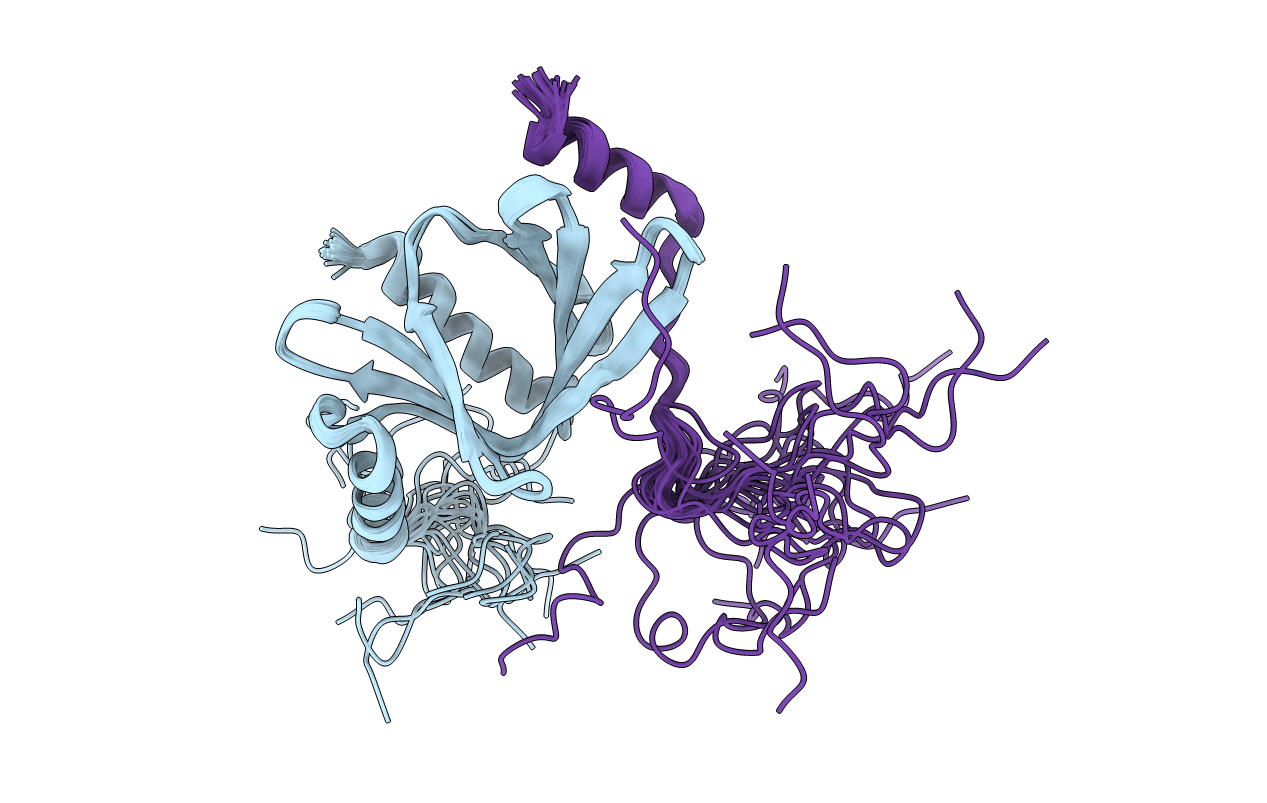
Deposition Date
2012-09-17
Release Date
2012-10-17
Last Version Date
2024-05-01
Entry Detail
PDB ID:
2LYD
Keywords:
Title:
The solution structure of the Dm DCP1 EVH1 domain in complex with the XRN1 DBM peptide
Biological Source:
Source Organism:
Drosophila melanogaster (Taxon ID: 7227)
Host Organism:
Method Details:
Experimental Method:
Conformers Calculated:
50
Conformers Submitted:
21
Selection Criteria:
structures with the lowest energy


